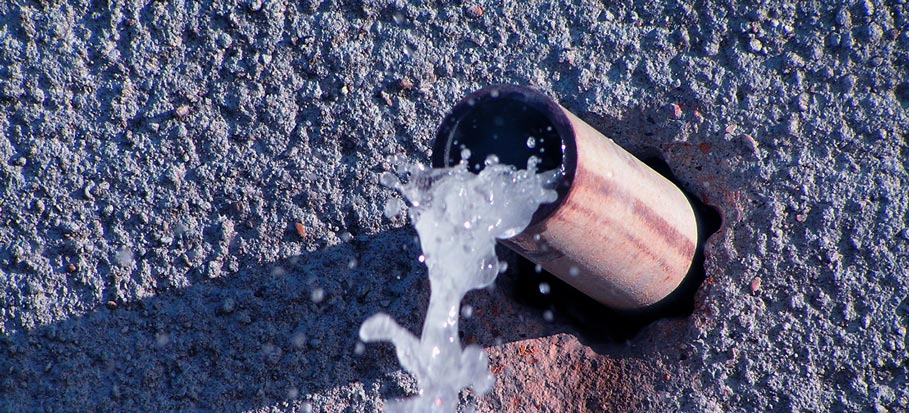Every person is bound to have their own individual rationale with regards to Hacks to detect leaks.

Early discovery of dripping water lines can reduce a possible calamity. Some small water leaks might not be visible.
1. Take A Look At the Water Meter
Every house has a water meter. Examining it is a surefire way that aids you uncover leaks. For starters, switch off all the water sources. Guarantee no one will certainly flush, utilize the tap, shower, run the cleaning maker or dish washer. From there, go to the meter and watch if it will alter. Since no person is using it, there need to be no activities. That shows a fast-moving leakage if it relocates. If you detect no changes, wait an hour or two as well as inspect back again. This indicates you might have a slow leak that could also be underground.
2. Check Water Intake
If you identify abrupt modifications, regardless of your consumption being the exact same, it means that you have leakages in your plumbing system. A sudden spike in your costs indicates a fast-moving leakage.
On the other hand, a steady increase each month, despite the very same practices, reveals you have a slow-moving leak that's additionally slowly rising. Call a plumber to extensively examine your residential or commercial property, specifically if you really feel a warm location on your flooring with piping beneath.
3. Do a Food Coloring Test
When it comes to water consumption, 30% comes from toilets. If the shade somehow infiltrates your bowl during that time without flushing, there's a leakage in between the container and also bowl.
4. Asses Exterior Lines
Don't fail to remember to inspect your outside water lines as well. Should water permeate out of the connection, you have a loose rubber gasket. One tiny leak can lose tons of water and increase your water costs.
5. Evaluate and also Assess the Scenario
Home owners must make it a practice to check under the sink counters and also also inside cupboards for any type of bad odor or mold development. These two warnings show a leak so punctual interest is needed. Doing regular assessments, also bi-annually, can save you from a major issue.
Examine for stainings as well as compromising as the majority of appliances as well as pipes have a life expectations. If you think leaking water lines in your plumbing system, don't wait for it to rise.
Early detection of leaking water lines can reduce a possible catastrophe. Some small water leaks may not be noticeable. Checking it is a guaranteed method that helps you uncover leakages. One little leakage can waste lots of water as well as surge your water bill.
If you suspect leaking water lines in your plumbing system, do not wait for it to escalate.
How to Know If Your Home Has a Hidden Leak
Water Meter Reveals Inexplicable Water Usage
If you’d like to test whether or not there’s a leak somewhere in your home, you can do this using your water meter. Here is how to conduct the test:
Don’t use any water in your home for at least 30 minutes; this also means not turning on faucets or water-using appliances.
Go outside, and check your water meter for activity.
If your water meter shows that there was activity, even though no one was using any water, this proves that there is a leak in your home.Visible Mold or Mildew Growth
Leaks behind walls create moist, dark environments that allow mold and mildew to grow and thrive. Eventually, you might see mold growth forming on the wall closest to a hidden leak.
If mold is growing in an area that receives a high amount of moisture, such as a bathroom, it may simply be an indication that better ventilation is needed. However, if you see mold growth on a wall or the ceiling in an area where you would not expect, you probably have a hidden leak.
Musty, Mildew Odor
Sometimes you might not be able to see the mold or mildew that is growing as a result of a leak. However, the smell can give the problem away just as easily. If you catch a whiff of something musty, there’s a good chance that old water is collecting somewhere in your home that you can’t see.
Stained/Warped Walls, Ceilings, or Floors
When your home soaks up water, a variety of red flags can become visible, including ceiling stains, bubbling drywall, warped walls, and sagging floors. While these issues can be caused by excess humidity, they can also be signs that a pipe or plumbing connection has started leaking behind your walls.
Inexplicably High Water Bill
After a while, you get a general sense for what your water bill should be. If you own a pool or sprinkler system, your bill will tend to be higher during summer. However, if you receive a water bill that seems especially high, and you can’t figure out what caused it, then you may have a hidden leak somewhere that’s increasing your bill.
https://www.plumbingjoint.com/blog/2019/july/how-to-know-if-your-home-has-a-hidden-leak/

Do you really like more info about Detecting hidden plumbing leaks? Place a short review below. We will be interested to listen to your opinions about this blog. In hopes that you come back again in the near future. Sharing is good. Who knows, you will be doing someone a favor. I enjoy reading our article about Leaking water lines.